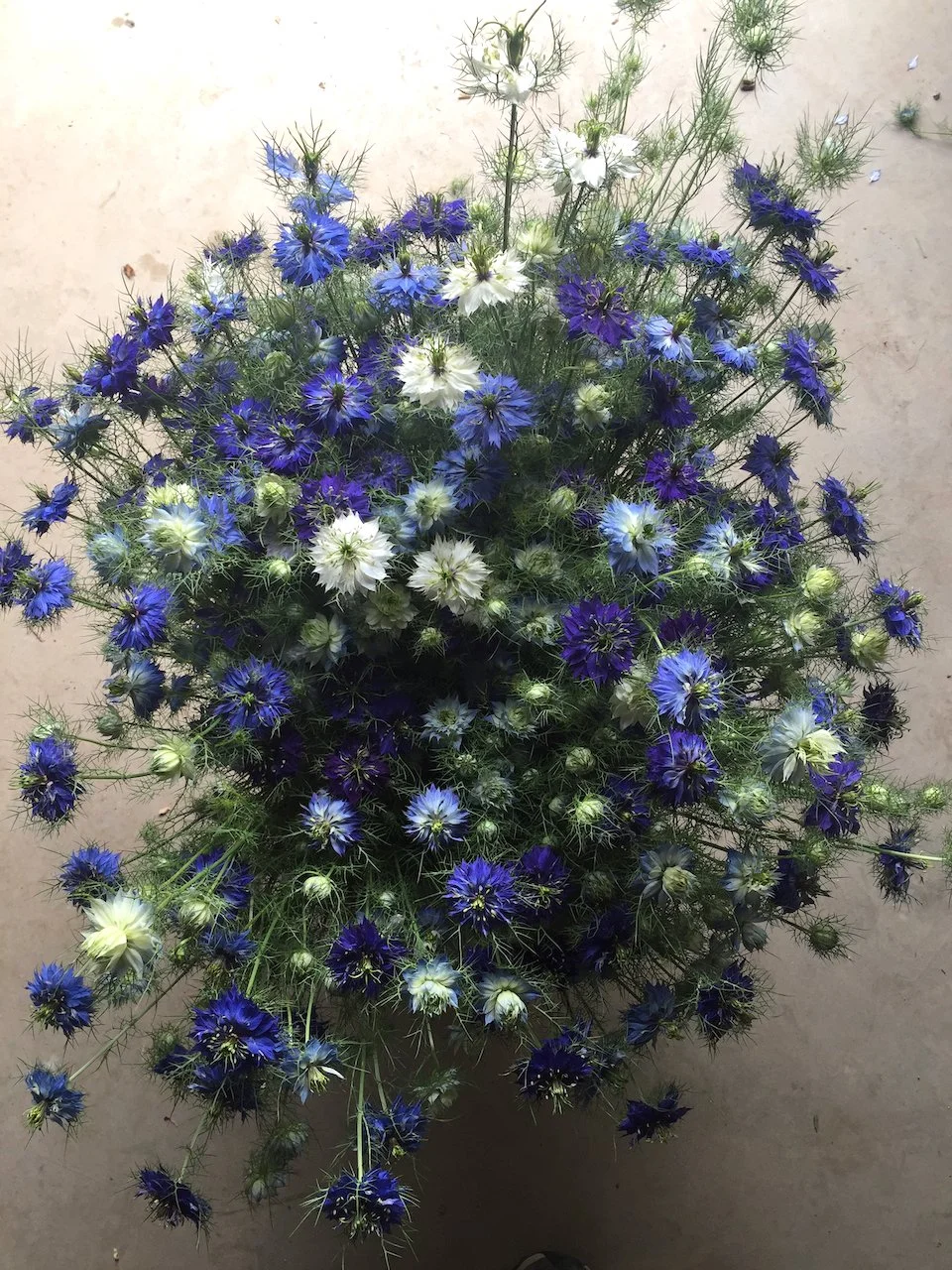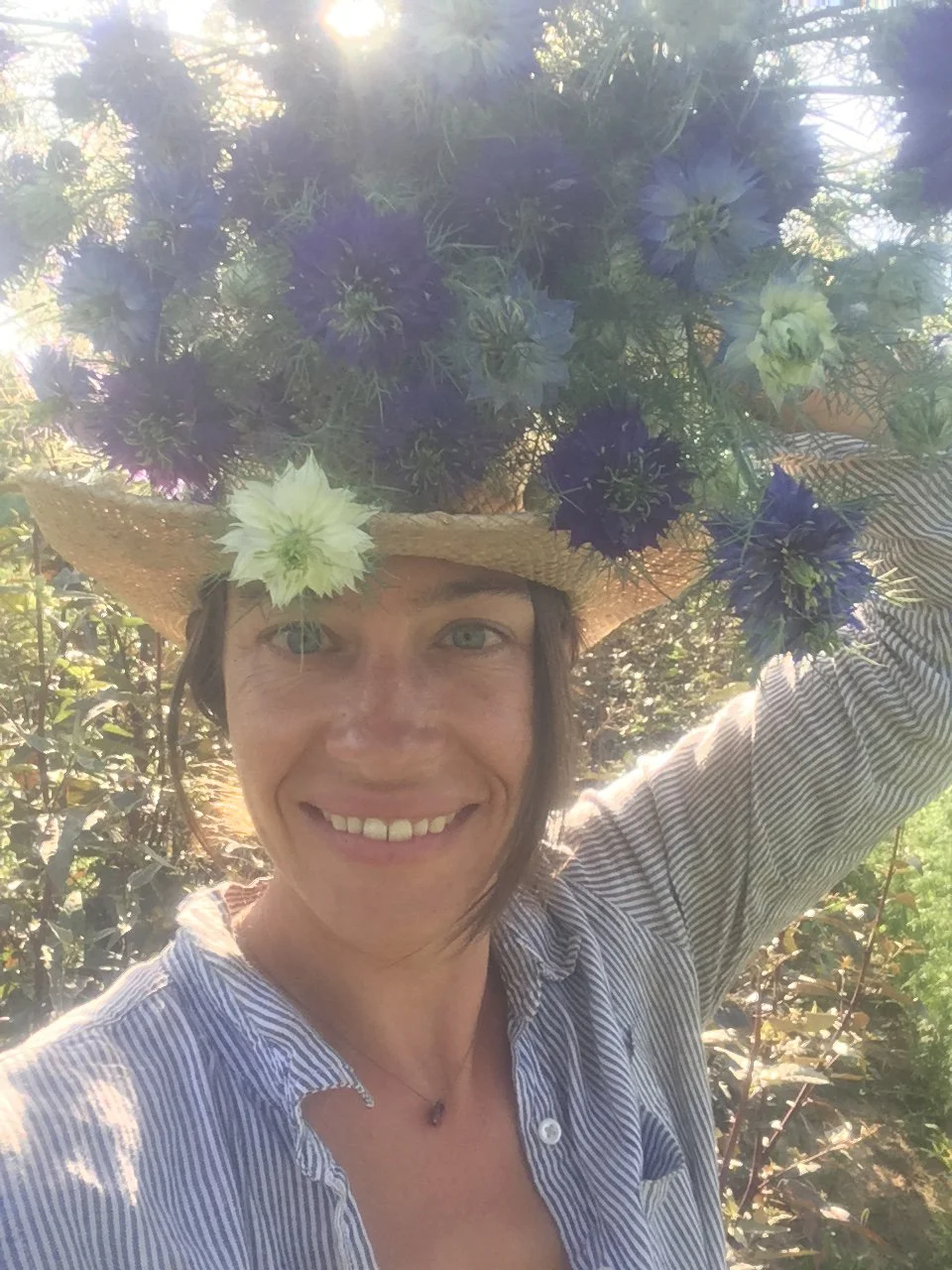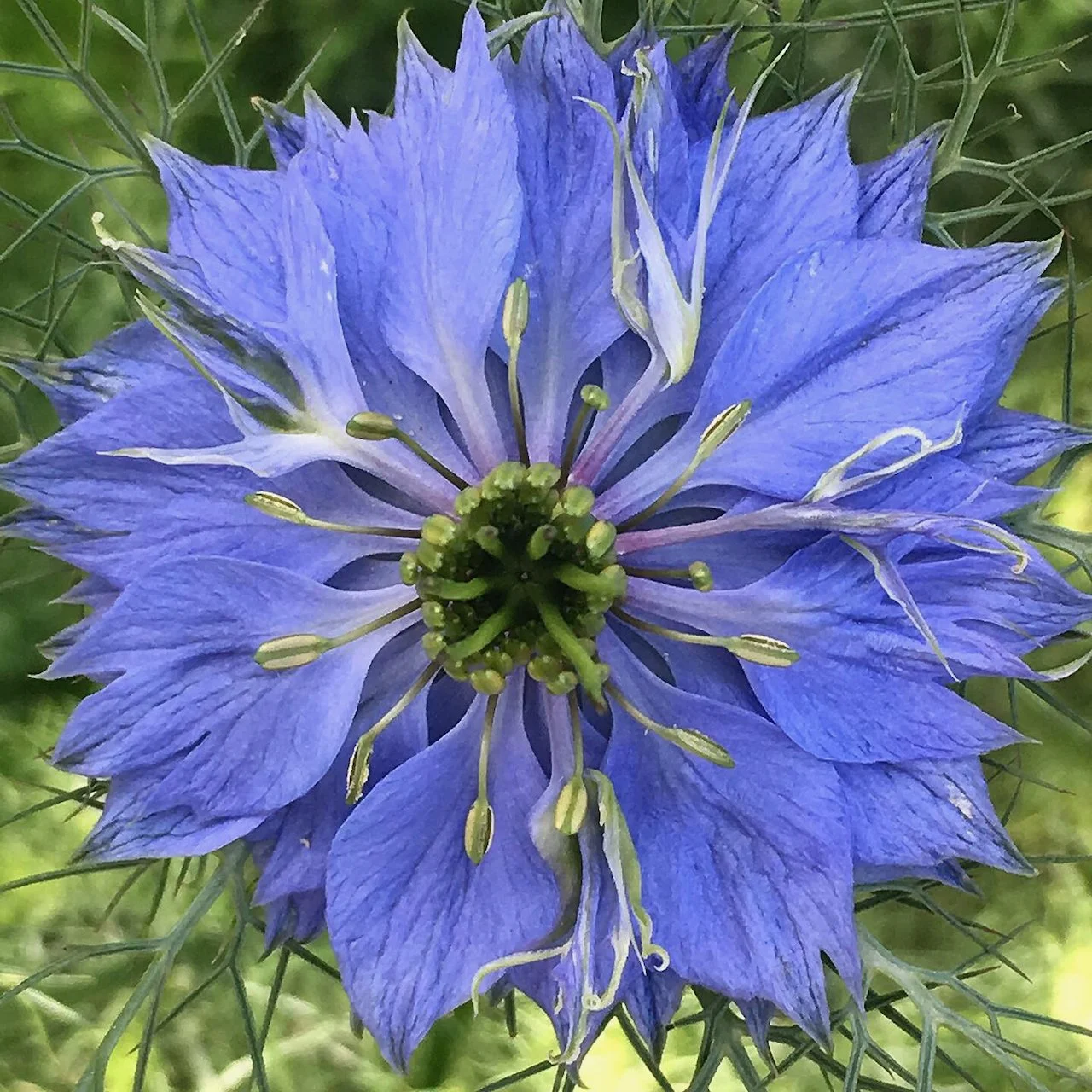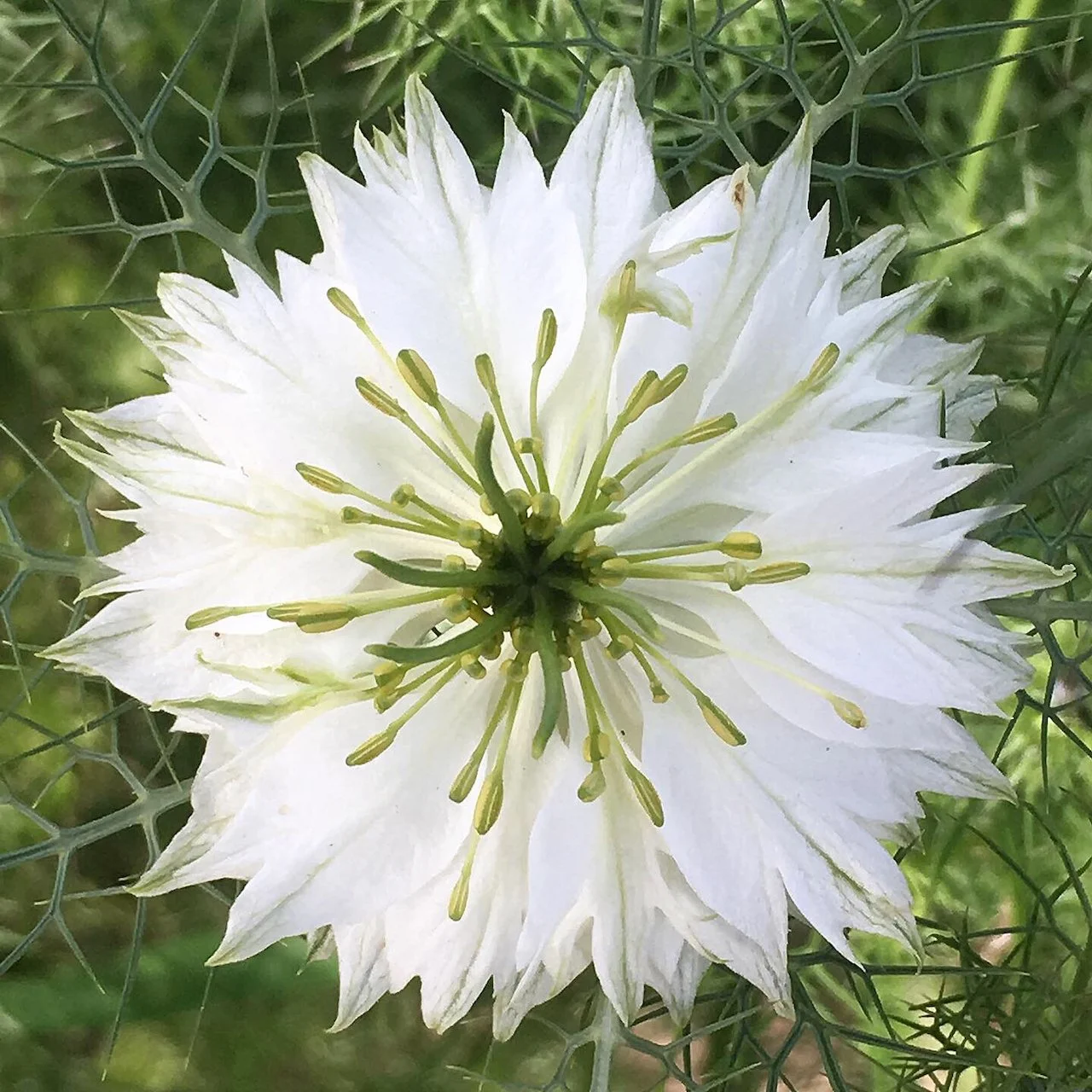Nigella: Flower Spotlight
This article comes from our series of flower spotlights, which are adaptations of the newsletters we send to members of our flower share throughout the season. You can see more spotlights by heading here.
Nigella damascena and N. orientalis, Nigella, AKA Love-in-a-Mist
A whole constellation of nigella 🤩
Even though it's not a huge flower, nigella packs a wallop in a bouquet. Its intricate, pointed petals, so beautifully layered, and its detailed, tiny stamens and pistils, surrounded by the lacy foliage and sepals — all of this creates a flower that simply looks like a jewel. And after the flower fades, the seed pod is a magnificent addition to late-season bouquets or to wreaths and other dried sundries in the fall and winter.
Why wouldn’t you wear them on your head?
The species is in the genus to which cumin belongs - cumin flowers look very similar to the cut flower species, but are called Nigella sativa, or ‘garden’/ ‘cultivated’ nigella. Nigella's Latin name comes from niger, 'black', and ella, 'small', referring to its small black seeds. The species name damascena is connected with the ancient city of Damascus, in Syria. Perhaps the flower reminded someone of the beautiful, intricate tile mosaics of mosques and other buildings there, or of the strange layers and swirls of Damascus steel, or the complicated patterns of damask fabric. The British Royal Horticultural Society lists the following common names for nigella: bird’s nest; blue crown; blue spider flower; chase-the-devil; devil in a bush; devil in the bush; garden fennel; Jack in prison; Jack in the green; Katherine’s flower; kiss-me-twice-before-I-rise; lady in the bower; love-in-a-puzzle; love-in-a-tangle, and St. Catherine’s flower — many of which, I’m sure you’ll agree, are delightful!
A second species of nigella that we cultivate is called ‘Transformer’, and it’s a true shapeshifting delight. This one is Nigella orientalis, or Eastern nigella. The yellow flowers are even more ephemeral than N. damascena, but are delightful nonetheless. After flowering, the beautiful flowers elongate and puff up to form a strange and even forbidding sort of sorceress’s crown. If you are a Lord of the Rings nerd like me, they may remind you of the Tower of Orthanc. (You know, where Gandalf was imprisoned by his superior Saruman and then had to whisper Elvish to a moth so the Lord of the Eagles Gwaihir would come and rescue him?)
Nigella orientalis, ‘Transformer’
The Tower of Orthanc (you get me, right?)
I dearly, dearly love nigella, and I do my best to get the best crop every year. I’ve learned that they like to be cold, but not too cold, so we plant them directly into the garden in February. We plant them thickly in 6 rows, 6” apart on our 4-ft wide beds, with about 3-4” between seeds. We use our Jang seeder for this, and the right roller is usually the F-24. We put row cover over top to keep them moist as they germinate, which they seem to love. We can also plant them in the fall, but they seem to have a 50/50 chance of making it through the winter.
I encourage you to take a moment to stare into the deep constellation that is a nigella bloom, as a respite from the busyness and heat of summer, or perhaps as its embodiment.
Nigella make an excellent centerpiece for wearable flowers like this pocket square.
A true blue flower is hard to ignore
Stamens, anthers, petals, and feathery sepals all combine to create that whirligig of magic!








